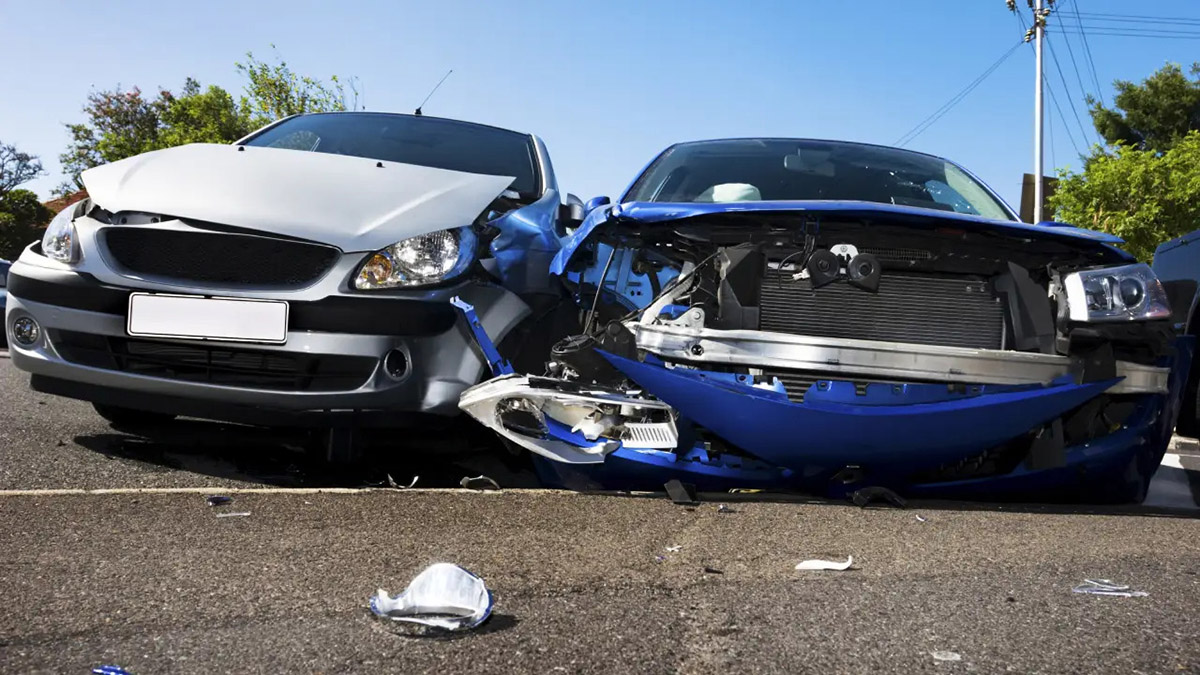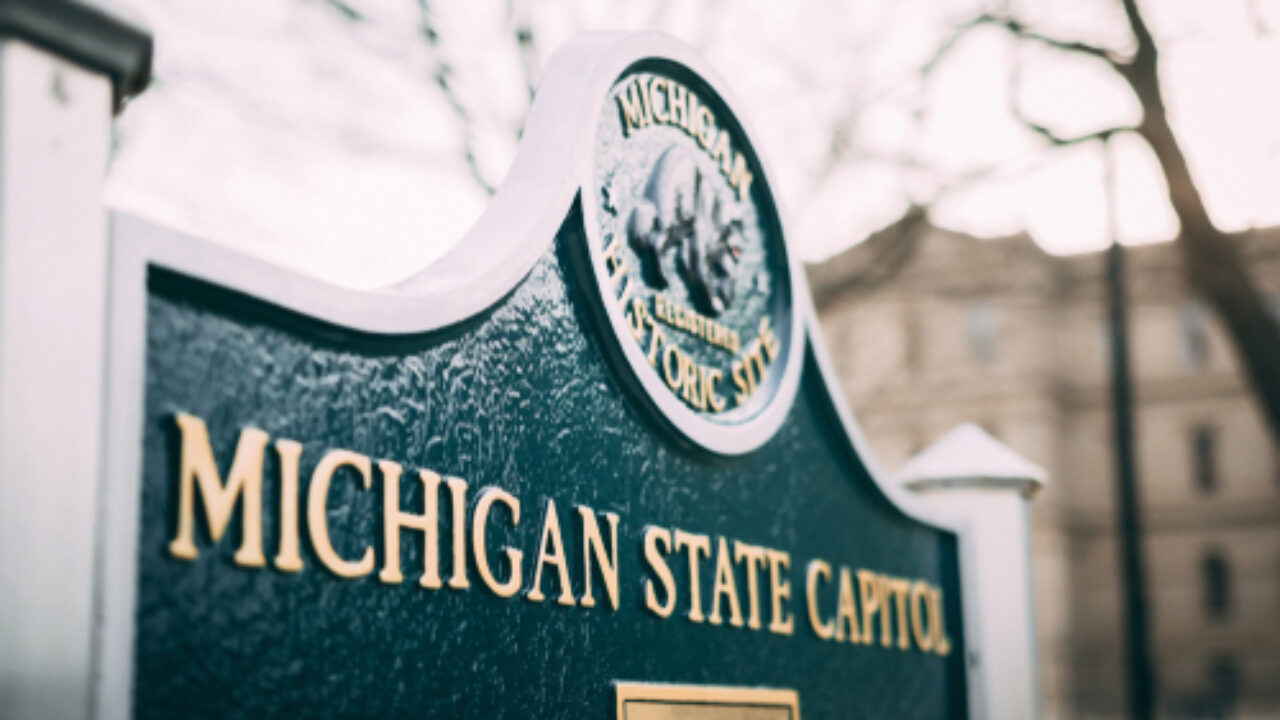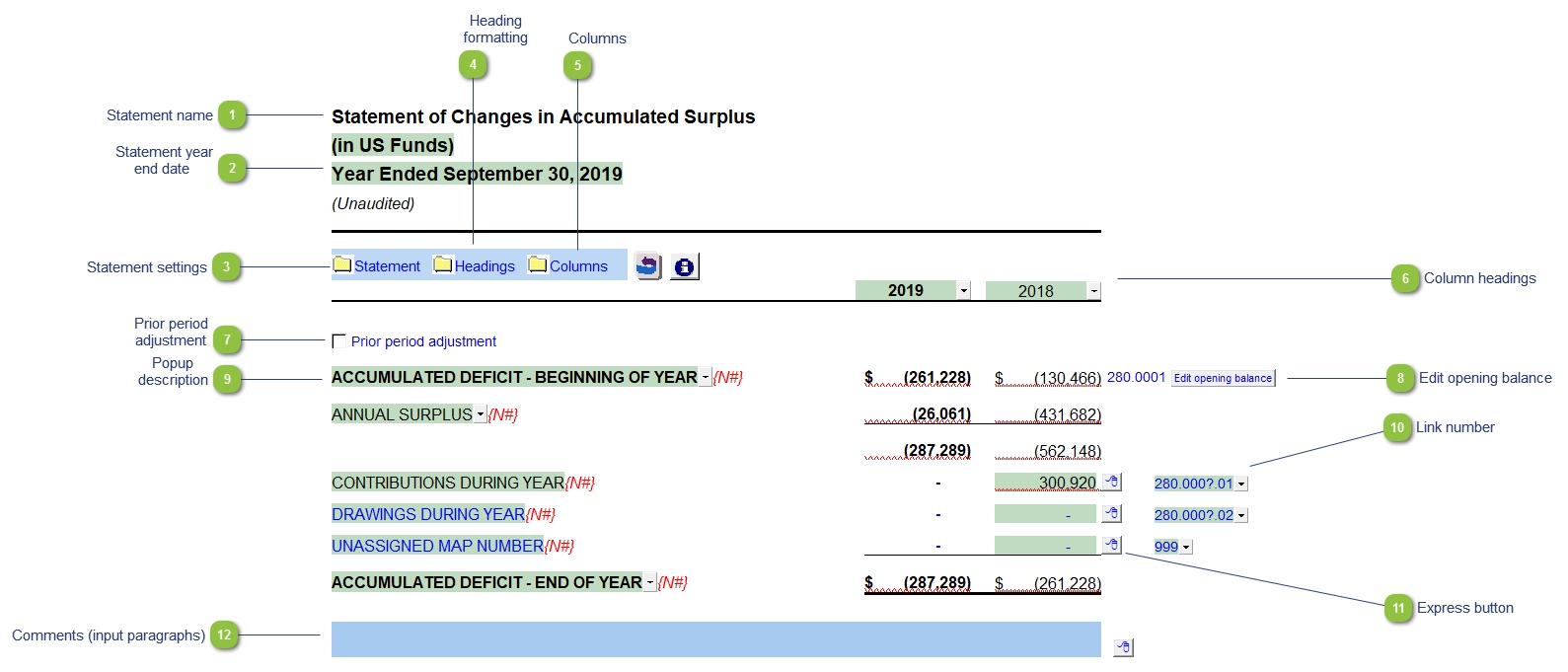

Finance
What Is Michigan No-Fault Insurance?
Published: November 6, 2023
Learn about Michigan no-fault insurance, a financial protection system that provides coverage for personal injuries and property damages resulting from car accidents.
(Many of the links in this article redirect to a specific reviewed product. Your purchase of these products through affiliate links helps to generate commission for LiveWell, at no extra cost. Learn more)
Table of Contents
- Introduction
- Definition and Overview of No-Fault Insurance
- History and Development of No-Fault Insurance in Michigan
- Key Features of Michigan No-Fault Insurance
- Personal Injury Protection (PIP) Coverage
- Property Protection Insurance (PPI)
- Residual Liability Insurance (BI/PD)
- Catastrophic Claims Association (MCCA) Fee
- Benefits of Michigan No-Fault Insurance
- Drawbacks and Controversies Surrounding Michigan No-Fault Insurance
- Reforms and Proposed Changes to Michigan No-Fault Insurance
- Conclusion
Introduction
Michigan no-fault insurance is a unique system that provides coverage for personal injuries and property damage resulting from automobile accidents. Unlike traditional fault-based insurance systems, where one party is typically found to be at fault and responsible for covering the damages, Michigan’s no-fault insurance system ensures that each party’s own insurance company covers their own losses, regardless of who is at fault in the accident.
This system was implemented in Michigan in 1973 with the goal of ensuring that accident victims receive prompt and adequate compensation for their injuries, regardless of fault. The idea behind no-fault insurance is to provide faster access to medical treatment and rehabilitative care, as well as to reduce the burden on court systems by resolving claims more efficiently.
Under the Michigan no-fault insurance system, every vehicle owner is required to have a specific level of coverage that includes personal injury protection (PIP) coverage, property protection insurance (PPI), and residual liability insurance (BI/PD). These mandatory coverages, along with the Michigan Catastrophic Claims Association (MCCA) fee, ensure that accident victims have access to necessary medical treatments and compensation for lost wages.
While the Michigan no-fault insurance system offers certain benefits, it is also subject to ongoing debates and proposed reforms due to rising insurance costs and concerns about fraud and abuse. In this article, we will explore the history and development of Michigan’s no-fault insurance system, examine its key features and coverages, discuss the benefits and drawbacks, and delve into the proposed changes and reforms to the system.
Definition and Overview of No-Fault Insurance
No-fault insurance is a type of auto insurance system that is designed to provide benefits to policyholders regardless of who is at fault in an accident. This means that regardless of whether you caused the accident or someone else did, your own insurance company will cover your losses. This stands in contrast to traditional fault-based insurance systems, where the at-fault party’s insurance would typically be responsible for paying for damages and medical expenses.
The main principle behind no-fault insurance is to provide a quicker and more efficient process of receiving compensation after an accident. By eliminating legal disputes and the need to establish fault, it aims to ensure that accident victims are promptly reimbursed for their injuries, medical expenses, and property damage.
In the case of Michigan, the state has implemented a unique no-fault insurance system that goes beyond just covering medical expenses. Michigan’s no-fault system encompasses three important types of coverage:
- Personal Injury Protection (PIP) Coverage: This coverage is mandatory for all vehicle owners in Michigan and is meant to provide benefits to individuals who are injured in auto accidents. PIP coverage includes medical expenses, rehabilitation costs, lost wages, and replacement services expenses.
- Property Protection Insurance (PPI): PPI coverage is also mandatory in Michigan and provides coverage for property damage caused by your vehicle to other people’s property, such as buildings, fences, and parked vehicles, regardless of fault.
- Residual Liability Insurance (BI/PD): This coverage provides liability protection in the event that you are sued for damages by another individual involved in an accident. It includes bodily injury (BI) and property damage (PD) liability coverage.
Additionally, Michigan drivers are required to pay the Michigan Catastrophic Claims Association (MCCA) fee, which helps fund lifetime medical expenses for individuals who have sustained catastrophic injuries in auto accidents.
Overall, the no-fault insurance system in Michigan aims to provide adequate compensation and support for accident victims, ensuring that they receive the necessary medical treatments and financial assistance to recover from their injuries. However, it is important to note that this system also comes with its own set of drawbacks and controversies, which we will explore further in this article.
History and Development of No-Fault Insurance in Michigan
The implementation of the no-fault insurance system in Michigan can be traced back to the early 1970s. Before the adoption of the no-fault system, Michigan followed a traditional fault-based system, where individuals involved in accidents had to rely on insurance companies or file lawsuits to receive compensation for their injuries and damages.
In 1973, the Michigan Legislature passed the Insurance Code of 1956, which introduced the concept of no-fault insurance in the state. This decision was driven by the goal of providing prompt and guaranteed compensation to accident victims while reducing the strain on the court system.
The key principles behind the no-fault insurance system in Michigan include:
- Prompt Compensation: Under the no-fault system, accident victims receive benefits and compensation more promptly since there is no need to determine fault or await court decisions. This allows victims to access necessary medical treatments and financial support without unnecessary delays.
- Elimination of Lawsuits: One of the primary aims of the no-fault system is to reduce the number of lawsuits resulting from auto accidents. By providing benefits regardless of fault, the system seeks to minimize legal disputes and litigation, streamlining the claims process.
- Benefit Coverage: The Michigan no-fault insurance system goes beyond basic medical coverage. It includes coverage for lost wages, rehabilitation expenses, replacement services, and even funeral expenses, ensuring accident victims have access to essential support.
Over the years, the Michigan no-fault insurance system has undergone several amendments and legislative changes. In 2019, a significant reform was passed, allowing drivers in the state to choose different levels of personal injury protection (PIP) coverage, ranging from unlimited coverage to lower limits, which can result in lower premiums for policyholders.
It is important to note that the no-fault system in Michigan has faced its fair share of challenges and criticisms. One primary concern has been the rising costs associated with insurance premiums in the state. Many argue that the generous benefits provided by the no-fault system, including unlimited lifetime coverage for catastrophic injury cases, have contributed to the high cost of insurance in Michigan.
In response to these concerns, there have been ongoing debates and proposed reforms focused on addressing the cost challenges associated with the no-fault system. These proposed changes aim to strike a balance between providing adequate benefits to accident victims and stabilizing insurance rates.
In the following sections, we will explore the key features, benefits, drawbacks, and proposed changes to the Michigan no-fault insurance system to gain a comprehensive understanding of its impact on drivers and residents of the state.
Key Features of Michigan No-Fault Insurance
The Michigan no-fault insurance system is unique and has several key features that distinguish it from traditional fault-based insurance systems. These features are designed to provide comprehensive coverage and support to accident victims in the state. Let’s explore some of the key features of Michigan no-fault insurance:
- Personal Injury Protection (PIP) Coverage: PIP coverage is a mandatory component of Michigan no-fault insurance. It provides benefits to individuals who are injured in auto accidents, regardless of who is at fault. PIP coverage includes medical expenses, rehabilitation costs, lost wages, and replacement services expenses. This ensures that accident victims have access to necessary medical treatments and financial support to aid in their recovery.
- Property Protection Insurance (PPI): PPI coverage is also mandatory under the Michigan no-fault system. It provides coverage for property damage caused by your vehicle to other people’s property, such as buildings, fences, and parked vehicles, regardless of fault. This coverage ensures that individuals are protected and compensated for damage and losses resulting from auto accidents.
- Residual Liability Insurance (BI/PD): Every vehicle owner in Michigan is required to have residual liability insurance, which includes bodily injury (BI) and property damage (PD) liability coverage. This coverage protects you in the event that you are sued for damages by another individual involved in an accident.
- Catastrophic Claims Association (MCCA) Fee: To fund lifetime medical benefits for individuals who have sustained catastrophic injuries, Michigan drivers are required to pay the MCCA fee. This fee helps cover the costs associated with providing lifetime care for those who have suffered severe injuries in auto accidents.
- Unlimited Lifetime Benefits: Michigan’s no-fault system offers unlimited lifetime medical benefits for those who sustain catastrophic injuries in auto accidents. This means that individuals with catastrophic injuries have access to ongoing medical care, rehabilitation services, and support for the rest of their lives.
These key features of the Michigan no-fault insurance system ensure that accident victims have access to comprehensive coverage and support. By providing benefits like unlimited lifetime medical benefits, property damage coverage, and liability protection, the system aims to protect individuals involved in auto accidents and provide them with the necessary resources for recovery.
While these features offer significant benefits to accident victims, the Michigan no-fault insurance system is not without its drawbacks and controversies. In the next section, we will explore the benefits and drawbacks of the system in more detail and discuss the ongoing debate surrounding its effectiveness and affordability.
Personal Injury Protection (PIP) Coverage
Personal Injury Protection (PIP) coverage is a fundamental component of the Michigan no-fault insurance system. It is a mandatory requirement for all vehicle owners in the state. PIP coverage ensures that individuals injured in auto accidents receive necessary medical treatment, rehabilitation services, lost wage compensation, and replacement services benefits, regardless of who is at fault for the accident.
The primary objective of PIP coverage is to provide accident victims with prompt and comprehensive medical benefits without the need for prolonged legal disputes. Here are some key aspects of PIP coverage in Michigan:
- Medical Expenses: PIP coverage includes coverage for medical expenses related to injuries sustained in an auto accident. This encompasses hospital bills, surgeries, doctor visits, medication, and other necessary medical treatments.
- Rehabilitation Services: PIP coverage also extends to rehabilitation services for accident victims. This includes physical therapy, occupational therapy, and any other necessary rehabilitative treatments to aid in the recovery process.
- Lost Wage Compensation: In the event of an accident that results in a temporary inability to work, PIP coverage provides income replacement benefits. These benefits help compensate for lost wages during the recovery period, ensuring that accident victims do not suffer financially due to their injuries.
- Replacement Services Benefits: PIP coverage also includes benefits for necessary services that the injured individual is unable to carry out, such as housekeeping, childcare, and lawn maintenance. These benefits help ensure that accident victims can maintain their daily lives and responsibilities while focusing on their recovery.
- Funeral Expenses: In the unfortunate event of a fatal accident, PIP coverage in Michigan also extends to cover reasonable funeral expenses for the deceased.
One important feature of PIP coverage in Michigan is that it provides unlimited medical benefits for accident victims. This means there is no upper limit to the amount of coverage individuals can receive for medical expenses related to their injuries. This unlimited lifetime benefit greatly assists those with severe injuries who require ongoing medical care and support.
It is worth noting that the unlimited lifetime benefits provided by PIP coverage have contributed to the high cost of insurance in Michigan. This aspect of the system has been a subject of debate and proposed reforms aimed at controlling premiums and improving affordability for drivers in the state.
Overall, the inclusion of PIP coverage in the Michigan no-fault insurance system ensures that accident victims have access to necessary medical care, rehabilitation services, and financial support without needing to establish fault or engage in lengthy legal battles. However, the rising costs associated with this coverage have sparked ongoing discussions regarding potential changes and reforms to the system.
Property Protection Insurance (PPI)
Property Protection Insurance (PPI) is a mandatory component of the Michigan no-fault insurance system. It provides coverage for property damage caused by your vehicle to other people’s property, such as buildings, fences, and parked vehicles, regardless of fault. PPI helps ensure that individuals are protected and compensated for damages and losses resulting from auto accidents.
Here are some key aspects of Property Protection Insurance (PPI) in Michigan:
- Coverage for Property Damage: PPI coverage is designed to cover the cost of repairing or replacing damaged property caused by your vehicle. This includes damage to third-party vehicles, buildings, fences, and other property that may be affected in an accident.
- Protection Regardless of Fault: One of the main features of PPI coverage is that it provides protection regardless of who is at fault in the accident. This means that even if you are responsible for the accident, your PPI coverage will still provide financial compensation for the property damage caused.
- No Deductibles: PPI coverage in Michigan does not typically require policyholders to pay a deductible before receiving compensation for property damage. This means that the insurance company will cover the costs of the damage, up to the policy limits, without requiring any out-of-pocket payments from the policyholder.
- Limitations and Policy Coverage: While PPI covers property damage, it does not usually extend to cover damage to your own vehicle. For coverage related to your own vehicle, comprehensive or collision coverage would typically be necessary. It is important to review your insurance policy to understand the specific coverage limits and any exclusions that may apply.
PPI is an essential component of the Michigan no-fault insurance system, as it ensures that individuals are protected from the financial burden of property damage resulting from auto accidents. By providing coverage regardless of fault, it streamlines the claims process and helps individuals receive compensation more quickly and efficiently.
It is important to note that PPI coverage does not absolve drivers from their responsibility to drive safely and take precautions to avoid accidents. Responsible driving is still crucial to prevent property damage and ensure the safety of all road users.
While PPI coverage is mandatory, policyholders have the option to purchase additional coverage beyond the minimum limits to provide greater protection in the event of significant property damage or higher-value assets. Reviewing your insurance policy and discussing your coverage needs with your insurance provider can help ensure that you have appropriate PPI coverage in place.
Overall, Property Protection Insurance (PPI) plays a vital role in mitigating the financial impact of property damage resulting from auto accidents, providing peace of mind and protection for both drivers and property owners in Michigan.
Residual Liability Insurance (BI/PD)
Residual Liability Insurance, also known as Bodily Injury (BI) and Property Damage (PD) liability coverage, is a mandatory component of the Michigan no-fault insurance system. This coverage provides protection in the event that you are sued for damages by another individual involved in an accident, and you are found to be at fault.
Here are some key aspects of Residual Liability Insurance in Michigan:
- Bodily Injury (BI) Liability Coverage: BI liability coverage helps protect you if you are responsible for causing an accident that results in injuries to others. It provides financial coverage to help pay for medical expenses, pain and suffering, and other damages for which you may be legally liable.
- Property Damage (PD) Liability Coverage: PD liability coverage helps cover the costs of property damage, including damage to other vehicles, buildings, or objects, that are caused by an accident for which you are found to be at fault.
- Minimum Coverage Limits: In Michigan, drivers are required to carry a minimum level of BI and PD liability coverage. The minimum limits as mandated by law are $20,000 for bodily injury or death per person, $40,000 for bodily injury or death per accident involving multiple people, and $10,000 for property damage per accident.
- Additional Coverage Options: While the minimum coverage limits are set by law, policyholders have the option to purchase additional liability coverage beyond the mandated limits. This can provide greater protection in the event of a severe accident where the damages exceed the minimum coverage limits.
Residual Liability Insurance is crucial in ensuring that drivers in Michigan have financial protection in case they are legally liable for causing injuries or damaging property in an accident. It helps protect their personal assets and provides compensation to the affected individuals, ensuring they receive appropriate reimbursement for their losses.
It is important to note that while Residual Liability Insurance is a mandatory component of no-fault insurance in Michigan, it is separate from Personal Injury Protection (PIP) coverage. PIP coverage provides benefits regardless of fault and covers the policyholder’s medical expenses and other related costs. Residual Liability Insurance comes into play when the policyholder is at fault and liable for injuries or property damage sustained by others.
When selecting Residual Liability Insurance, it is recommended to carefully consider your coverage needs and consult your insurance provider to determine if the state-mandated minimum limits are sufficient or if additional coverage is advisable to provide greater protection.
Understanding and maintaining adequate Residual Liability Insurance coverage is essential for all drivers to ensure that they are financially protected and compliant with the legal requirements outlined by the Michigan no-fault insurance system.
Catastrophic Claims Association (MCCA) Fee
The Catastrophic Claims Association (MCCA) fee is a unique component of the Michigan no-fault insurance system. It is a mandatory fee that is assessed to all drivers in the state to help cover the costs associated with providing lifetime medical benefits for individuals who sustain catastrophic injuries in auto accidents.
Here are the key aspects of the Catastrophic Claims Association (MCCA) fee:
- Role of the MCCA: The MCCA is a non-profit organization that was established in 1978 as a result of the Michigan no-fault system. Its primary purpose is to reimburse insurance companies for the cost of providing unlimited lifetime medical benefits to individuals who suffer catastrophic injuries in auto accidents.
- Calculation and Assessment: The MCCA fee is calculated annually based on the expected cost of claims for the upcoming year. This fee is then assessed to all drivers in Michigan and is included in their insurance premiums. The exact amount of the MCCA fee can vary each year and is set by the MCCA board of directors.
- Lifetime Medical Benefits: The MCCA fee plays a crucial role in funding lifetime medical benefits for individuals with catastrophic injuries. These benefits cover ongoing medical care, rehabilitation services, and other necessary medical treatments for the rest of the individual’s life.
- Stabilizing Insurance Rates: The purpose of the MCCA fee is to spread the costs associated with catastrophic injuries across all drivers in Michigan. By pooling the funds and distributing the expenses, the MCCA helps stabilize insurance rates and ensures that the burden of providing lifetime medical benefits is shared collectively.
The MCCA fee is an essential aspect of the Michigan no-fault insurance system. It allows individuals who have suffered catastrophic injuries in auto accidents to receive the lifetime medical care they need without facing financial hardship. By spreading the costs across a larger pool of drivers, the MCCA fee helps ensure that the responsibility of providing ongoing medical benefits is not shouldered solely by the individual insurance companies or the accident victims themselves.
It is important for drivers in Michigan to be aware of the MCCA fee and understand that it is included in their insurance premiums. The fee may vary from year to year and can contribute to the overall cost of insurance. Reviewing your insurance policy and consulting your insurance provider can help you understand the specific details and implications of the MCCA fee in relation to your coverage.
Overall, the MCCA fee serves as a vital mechanism for providing lifetime medical benefits to those with catastrophic injuries and plays a significant role in maintaining the stability of insurance rates in the Michigan no-fault insurance system.
Benefits of Michigan No-Fault Insurance
The Michigan no-fault insurance system offers several benefits for drivers and accident victims in the state. These benefits are designed to provide prompt and comprehensive coverage, ensure timely medical treatment, and alleviate the burden of legal disputes. Let’s explore some of the key benefits of the Michigan no-fault insurance system:
- Prompt Medical Treatment: One of the primary benefits of the no-fault system is the prompt access to medical treatment for accident victims. Regardless of fault, individuals are able to receive necessary medical care without delays typically associated with determining liability or going through legal proceedings.
- Comprehensive Coverage: The Michigan no-fault system provides extensive coverage for accident victims. Personal Injury Protection (PIP) coverage ensures that individuals receive benefits for medical expenses, rehabilitation costs, lost wages, and replacement services. This comprehensive coverage helps lessen the financial burden for those injured in auto accidents.
- Protection Regardless of Fault: Under the no-fault system, accident victims are protected regardless of who caused the accident. This eliminates the need for litigation to establish fault and allows individuals to receive compensation and support even if they were partially responsible for the accident.
- Efficient Claims Process: The no-fault system streamlines the claims process, reducing the need for protracted legal battles and saving both time and money. Accident victims can file claims directly with their own insurance company, and the insurance company is responsible for providing the necessary benefits and compensation.
- Lifetime Medical Benefits: The no-fault system in Michigan provides unlimited lifetime medical benefits for individuals with catastrophic injuries. This ensures that those who sustain severe and life-altering injuries have access to ongoing medical care, rehabilitation services, and financial support for the rest of their lives.
- Reduction in Lawsuits: By providing benefits regardless of fault, the no-fault system has helped reduce the number of lawsuits related to auto accidents in Michigan. This not only reduces the burden on the court system but also helps keep insurance rates more stable for drivers in the state.
These benefits make the Michigan no-fault insurance system advantageous for drivers, as it provides faster access to medical treatment, comprehensive coverage, and a streamlined claims process. It ensures that accident victims receive the necessary support to recover from their injuries and resume their daily lives without the added stress of legal battles.
While the system has its drawbacks and ongoing discussions about potential reforms, the benefits offered by the Michigan no-fault insurance system cannot be overlooked. It serves as a safety net for both drivers and accident victims, providing essential protection and support in times of need.
Drawbacks and Controversies Surrounding Michigan No-Fault Insurance
While the Michigan no-fault insurance system offers numerous benefits, it is not without its drawbacks and controversies. These concerns have sparked discussions and debates regarding the effectiveness, affordability, and sustainability of the system. Let’s explore some of the key drawbacks and controversies surrounding Michigan no-fault insurance:
- High Insurance Premiums: One of the main concerns surrounding the no-fault system in Michigan is the high cost of insurance premiums. The generous benefits provided by the system, such as unlimited lifetime medical benefits for catastrophic injuries, have contributed to rising insurance rates, making it challenging for some drivers to afford adequate coverage.
- Potential for Fraud and Abuse: The no-fault system has also faced criticism due to the potential for fraud and abuse. There have been cases of fraudulent claims, unnecessary medical treatments, and inflated billing, which can drive up costs for insurers and policyholders alike.
- Uncompensated and Underinsured Drivers: Some argue that the no-fault system has resulted in a significant number of uninsured or underinsured drivers in Michigan. The high cost of insurance premiums, especially for individuals with lower incomes, has led some to forego insurance altogether or opt for minimum coverage, which may not be sufficient to cover the costs of an accident.
- Overburdened Catastrophic Claims Association: The Catastrophic Claims Association (MCCA) that funds lifetime medical benefits for individuals with catastrophic injuries has faced financial strain. The rising costs of medical care and the number of claims have put pressure on the MCCA, leading to increased assessments and fees passed on to drivers.
- Inequities in Premium Rates: Critics argue that the current system results in inequities in premium rates, as factors such as ZIP code, credit score, and occupation are taken into account in determining insurance rates. This has led to concerns about unfair pricing practices and the potential for discrimination against certain groups of drivers.
- Proposed Reforms and Changes: In response to the drawbacks and controversies, various reforms and changes to the no-fault system have been proposed. These include options to limit personal injury protection (PIP) coverage, introduce fee schedules for medical treatments, and prioritize cost containment measures to help alleviate the burden on insurance premiums for drivers.
It is important to acknowledge the challenges and criticisms surrounding the Michigan no-fault insurance system. While it has provided significant benefits to accident victims, the rising costs, potential for fraud, and concerns about accessibility and affordability have prompted discussions aimed at finding a balance between providing necessary support and controlling insurance rates.
By addressing these drawbacks and controversies, policymakers and stakeholders strive to create a more sustainable and effective no-fault insurance system that ensures fair and affordable coverage for all drivers while still meeting the needs of accident victims.
Reforms and Proposed Changes to Michigan No-Fault Insurance
Given the ongoing concerns and controversies surrounding the Michigan no-fault insurance system, there have been several proposed reforms and changes aimed at addressing the drawbacks and improving the effectiveness, affordability, and sustainability of the system. Let’s explore some of these proposed reforms:
- Choice in Personal Injury Protection (PIP) Coverage: A significant reform that was enacted in 2019 allows drivers in Michigan to choose different levels of PIP coverage. Prior to this change, PIP coverage was unlimited for all drivers. This reform offers drivers the option to select lower coverage limits, which can result in reduced premiums.
- Fee Schedule for Medical Treatments: There have been proposals to implement a fee schedule for medical treatments covered under the no-fault system. By establishing set rates for medical services, it is believed that costs can be better controlled, ensuring fair compensation for providers while preventing excessive billing and reducing insurance premiums.
- Fraud Prevention Measures: To combat fraudulent claims and abuse, there have been calls for enhanced fraud prevention measures. This includes increased oversight, stricter regulations, and penalties for those found guilty of fraudulent activities within the no-fault system.
- Revised Catastrophic Claims Association (MCCA) Assessment: There have been discussions about reforming the MCCA assessment structure to ensure fairness and sustainability. This may involve refining the calculation methods to accurately reflect the actual costs of catastrophic injuries, exploring alternative funding mechanisms, and improving transparency in how the assessments are applied.
- Social Equity Considerations: Proposed reforms also seek to address social equity concerns in the insurance system. This involves examining factors such as ZIP code, credit score, and occupation in determining premium rates to ensure fair and non-discriminatory pricing practices.
- Educational Initiatives: Alongside the reforms, there have been efforts to enhance consumer education and awareness regarding the no-fault system. This includes providing clearer information about coverage options, rights, and responsibilities, ensuring that individuals can make informed decisions when selecting their insurance policies.
These proposed reforms reflect the ongoing commitment to address the challenges and controversies surrounding the Michigan no-fault insurance system. The goal is to strike a balance between providing necessary coverage and benefits for accident victims while safeguarding affordability for drivers and controlling insurance rates.
It is important to note that no-fault insurance reforms require careful consideration and collaboration among legislators, insurance companies, healthcare providers, consumer advocacy groups, and other stakeholders. The ultimate objective is to establish a system that maintains the core principles of the no-fault system while addressing the concerns raised by various parties involved.
As discussions continue and reforms are explored, the focus remains on creating a sustainable and equitable no-fault insurance system in Michigan that balances the needs of accident victims and drivers while promoting stability and fairness for all.
Conclusion
The Michigan no-fault insurance system has been a cornerstone of auto insurance in the state since its implementation in 1973. It provides unique benefits and coverage for accident victims, ensuring prompt medical treatment, comprehensive support, and protection regardless of fault. The system’s key components, such as Personal Injury Protection (PIP) coverage, Property Protection Insurance (PPI), Residual Liability Insurance (BI/PD), and the Catastrophic Claims Association (MCCA) fee, work together to provide extensive coverage and financial support for individuals involved in auto accidents.
However, the no-fault system is not without its drawbacks and controversies. Rising insurance premiums, concerns about fraud and abuse, uninsured drivers, and financial strain on the Catastrophic Claims Association have raised questions about the sustainability and affordability of the system. As a result, there have been proposed reforms and changes aimed at addressing these concerns and improving the effectiveness of the system.
Reforms such as the choice in PIP coverage, fee schedules for medical treatments, enhanced fraud prevention measures, and revision of the MCCA assessment structure have been suggested to address the challenges faced by the no-fault system. Additionally, social equity considerations and efforts to enhance consumer education are crucial aspects of proposed changes to ensure fairness and transparency in the insurance system.
As discussions and debates continue, it is evident that finding the right balance between providing necessary support for accident victims and maintaining affordable coverage for all drivers is vital. Policymakers, insurance companies, healthcare providers, and consumer advocacy groups must work together to implement reforms that uphold the core principles of the no-fault system while addressing the concerns raised by various stakeholders.
The Michigan no-fault insurance system has played an instrumental role in providing comprehensive coverage, timely medical treatments, and a streamlined claims process for accident victims for several decades. By continuing to evaluate and adapt the system through necessary reforms, Michigan can aim to create a well-functioning, sustainable, and equitable no-fault insurance system that benefits both drivers and accident victims for years to come.














